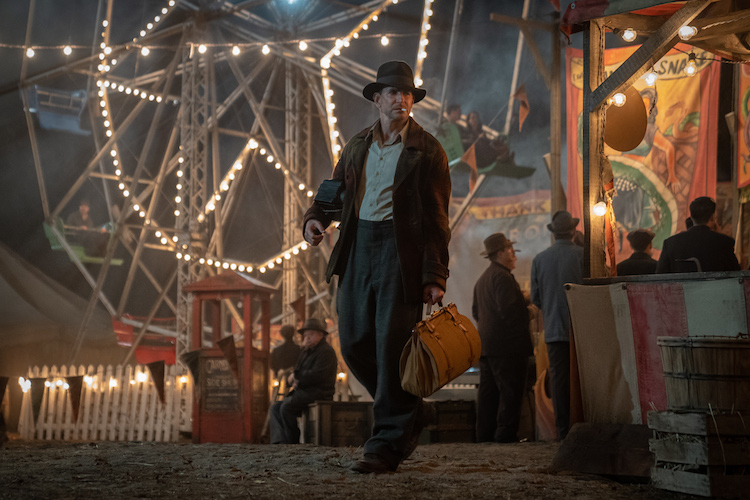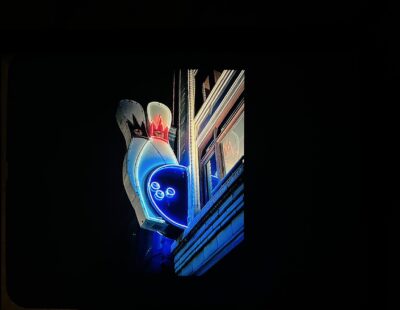
Another remake of a classic film has come to town, pitching its tent like a carnival of the grotesque. Fans of film noir will immediately recognize the title of the movie it’s based on: Nightmare Alley. The original was a black & white release that hit screens in 1947 just days before Halloween. Now Guillermo del Toro, maestro of the macabre, has given filmdom a Yuletide gift; you can call it his nightmare before Christmas. Compared to the original, it’s longer, bloodier, and, of course, in color, although maybe del Toro realized the latter choice was a mistake because it’s rumored that a black & white version is being prepped.
Bradley Cooper stars as Stan, a flat broke drifter living during the tail end of the Great Depression. After he stumbles across a carnival, Stan approaches one of the carneys for work and quickly finds his place within the itinerant family of sideshow misfits. Rooney Mara plays Molly, who survives staged electrocutions night after night. Toni Collette, as Zeena the Seer, works a clairvoyance act with the help of her partner Pete, played by David Strathairn. Before Pete succumbed to alcoholism, he and Zeena had their own show entertaining high society; Zeena would take something handed over from the audience, and Pete, with his eyes blindfolded, would describe the object in precise detail.
Pete confides in Stan the system of coded language he had invented that allowed Zeena to secretly communicate to him that which he could not see. Stan quickly masters Pete’s code and sees an opportunity to strike out on his own as “The Great Stanton.” He convinces Molly, now his lover, to join him. Their act is enhanced by his preternatural ability to read people. But one of Stan’s tragic flaws is that he can’t read himself. When he makes a sharp right turn into spiritualism by pretending he can communicate with lost loved ones, he cons himself into believing he’s doing good by giving the bereaved peace of mind. This does not sit well with Molly. Then, one fateful day – and Nightmare Alley is nothing if not about fate – Stan catches the eye of a psychiatrist named Lilith, played with femme fatale relish by Cate Blanchett.
There’s an inherent meta quality to Nightmare Alley by virtue of the fact that Guillermo del Toro chose to remake a recognized classic; his hubris is not unlike Stan’s in believing he could raise an old act to new heights. Del Toro mostly succeeds. The two central performances might be the exception. Compared to the Molly character performed by Coleen Gray in the original, Rooney Mara’s Molly generates far fewer sparks. Ditto for Bradley Cooper‘s interpretation of Stan. Nightmare Alley’s bygone world of hucksters and dreamers cries out for larger than life characters, not disciples of Lee Strasberg.
Nonetheless, when it comes to creating indelible images, few directors can match Guillermo del Toro‘s virtuosity. There’s a Kafkaesque yet sensual opulence to his dark sensibilities. And sometimes a decent film becomes instantly unforgettable when it sticks the landing. Nightmare Alley does just that. Del Toro and co-writer Kim Morgan wisely end the story with a line that the 1947 version used but did not end on, and Bradley Cooper sells it with startling poignancy, perfectly conveying Stan’s dawning realization that every sinner must pay the piper – eventually.
For KSQD’s Film Gang, this is Paul Kanieski










